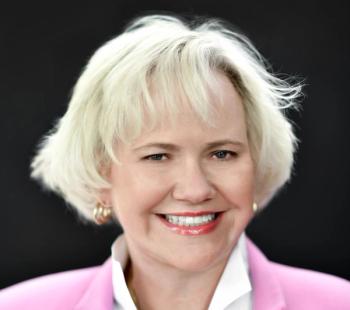
Behavioral health: What we learned in 2023, and how we navigate the future | Viewpoint
Balancing increasing demand, workforce challenges and new technology with a new model of whole person care.
The past year has seen significant growth in the behavioral health space.
The number of
With the ever-evolving landscape of mental health and wellness, it is essential to take stock of the trends that have shaped 2023 so that we can improve the ways we help people.
Between growing demand for behavioral health services, the role of technology in improving care, and the challenges and opportunities facing independent pharmacies, there is a lot to think about moving into 2024.
Decreasing stigma and growing demand
Since the pandemic, demand for behavioral health services has increased at an almost unbelievable rate. This growth can be attributed to both a rise in behavioral health conditions themselves, and a reduction in the stigma surrounding mental health issues. More people are now willing to seek help and identify their mental health needs, contributing to the surge in demand for behavioral health services.
In response to the increasing need, many providers have explored creative ways to reach individuals who might otherwise face barriers to care. These approaches include community-based initiatives, school outreach programs, and mobile counseling units that bring mental health support directly to those in need. Moving forward, these efforts can continue to reduce stigma and ensure that individuals can access the care they require without facing additional obstacles.
Advancements in medication management
Medications play a crucial role in treating many behavioral health conditions, and recent developments in the field have greatly improved medication adherence among this vulnerable population. For example, long-acting injectables have become more prevalent as an alternative to daily or weekly medication regimens, with specialty pharmacies to administer them. This innovation simplifies the treatment process and reduces the decision-making burden on individuals, ultimately improving medication management and outcomes.
Technology-driven solutions have also emerged as powerful aids towards improved behavioral health outcomes. Smart medication management systems and mobile applications are becoming increasingly popular in helping individuals manage their medication regimens effectively.
These tools provide reminders, track dosages, and offer valuable insights into medication adherence, helping people stay on track with their treatment plans. Furthermore, wearable devices and mental health apps are empowering individuals to monitor their emotional well-being, track mood changes, and access resources for self-help and crisis intervention.
By harnessing the potential of technology, behavioral health professionals can empower individuals to take an active role in managing their mental health. This intersection of technology and behavioral health is a promising trend that is set to evolve further in the coming year.
Workforce challenges, a push for technology and the value of payor engagement
Unfortunately, workforce shortages have emerged as a significant challenge in the behavioral health industry, and things have not improved in recent months. Nearly half
These workforce deficiencies have caused a growing need to explore innovative solutions that can bridge the gap in service delivery. This includes not only hiring clinical staff but also adopting technologies and tools that can optimize operations and enhance efficiency.
As a result, payor engagement is becoming increasingly important. Presenting new technologies and other cost-effective solutions that help to move the needle is crucial in conversations with stakeholders, including insurers and government agencies. Payor engagement is no longer just about billing and reimbursement; it's a comprehensive approach to managing the behavioral health population that delivers value to both payors and end users.
As healthcare providers can demonstrate their ability to leverage technology for cost-effective care delivery in the coming years, they will be better positioned to negotiate favorable terms and secure support for their initiatives.
Contracting can include outcomes-based agreements, which allow the payor to achieve confirmed benchmarks for those services, the provider to get incremental recognition for the value they produce, and most importantly, the individual to achieve a better, healthier life. In this approach, everybody wins.
Looking ahead: Pharmacy access and the path forward
As we look to the future of behavioral health, a notable development on the horizon is the evolving landscape of traditional pharmacies. These established pharmacy chains, often recognized by their household names, have long served as primary points of access for medication and healthcare services. However, there are growing signs that even these giants of the pharmacy world are facing workforce shortages and operational challenges.
The population most negatively impacted by a shortage in the "normal" standard of care is a population already underserved by the current standard of practice. These are those individuals with the most complex medical challenges related to behavior and mental health, and difficulty at times advocating for themselves. This is where we must focus critical attention.
For example, a reduction in available hours at a pharmacy means individuals who cannot drive themselves to a pharmacy, and are reliant on someone else to transport them (whether public transit or a provided shuttle) do not always have the option to change the time they arrive. Details like this exacerbate the difficulties that individuals with behavioral health conditions encounter when trying to obtain their medications and receive crucial guidance on their treatment plans.
As the deficiencies in traditional pharmacy services become apparent, specialized providers are stepping in to fill the gap. In 2024, expect to witness an even more pronounced emphasis on tailored solutions for behavioral health pharmacy. It is likely that we will see the expansion of specialized providers who are dedicated to meeting the unique needs of this population. These providers are poised to offer a more comprehensive and whole person approach, ensuring that individuals receive the support and access to medications they require, regardless of the challenges faced by traditional pharmacies.
Technology can help address some of the hardships for both providers and end users of the behavioral healthcare system, but these ideas, software, and devices should always serve as an assistant rather than a replacement for in-person care. Technologies like telehealth and medication management systems can help enhance the quality of care and provide valuable data to inform in-person discussions.
As we move forward, the shifting dynamics of pharmacy access underscore the importance of innovation, adaptability, and a whole person approach in the field of behavioral health. The commitment to bridging gaps in care improves access to affordable behavioral health, IDD, and SUD prescription drugs. As we learn to pivot and better coordinate care, use resources wisely and act responsibly with funding, it is possible to make essential medications and services accessible to all who need them.
Conclusion: Shaping a compassionate future
Technology, workforce challenges, and payor engagement play pivotal roles in the evolving landscape of behavioral health pharmacy. The journey to providing high-quality, affordable care for behavioral health is an ongoing one, but with dedicated professionals and innovative solutions, the future looks brighter.
As we move forward, the industry must continue to prioritize whole person care and work collaboratively to ensure that individuals receive the support they need to lead healthier, more fulfilling lives.
Eric Elliott serves as chief executive officer at Altruix.






















































































